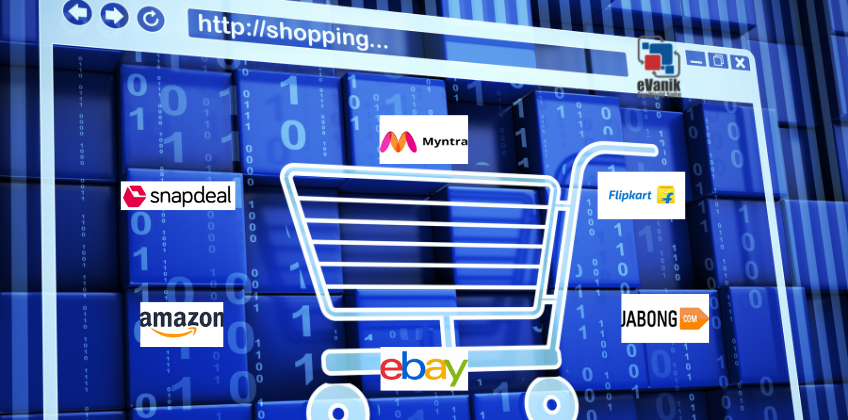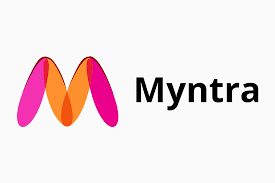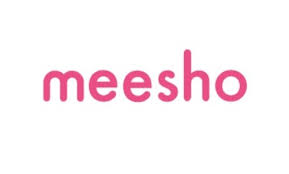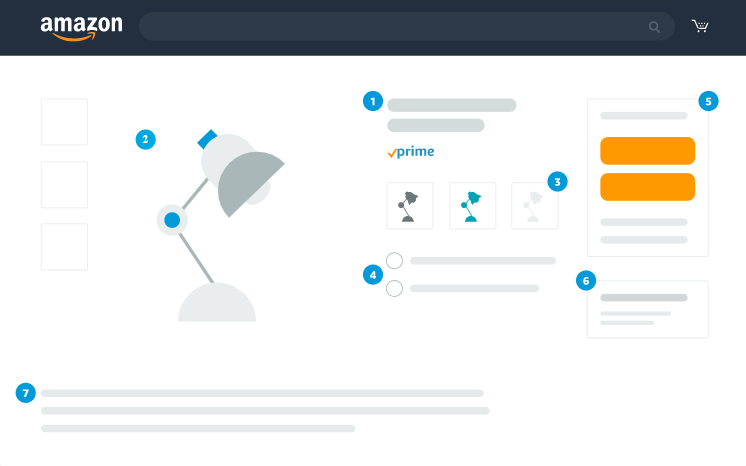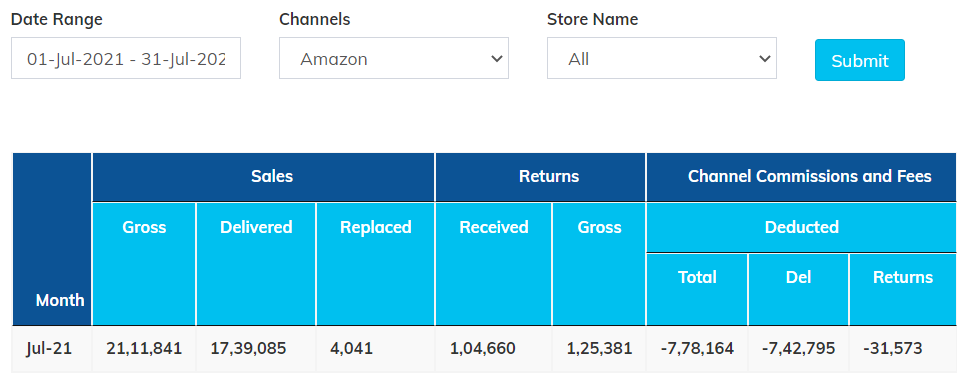Inventory Management
Inventory Management is crucial to prevent an “out-of-stock” situation that can lead to lost sales for ecommerce sellers and disappointment for customers. Inventory management controls the entire flow of goods from manufacturers to warehouses and from there to point of sale. It entails management of orders, returns, logistics, returns etc.
It is necessary to streamline the inventory management system as a mismanaged inventory can lead to retailers witnessing huge losses.
Why do you need Inventory Management?
It is imperative for ecommerce retailers to be aware of its inventory in order to achieve efficient as well as fast operations, at an affordable cost.
An efficient management of inventory results in reducing costs that further helps to keep accounts and finances of retailers in check.
It also helps in offering better customer service through fast delivery of goods and low shipping charges, thereby meeting customers’ expectations.
Benefits of Inventory Management: There are a plethora of benefits in having inventory management.
Keeps track of one’s inventory and provides a centralized view of stock.
Controls the costs of ecommerce sellers by creating stock reports in order to analyse the inventory.
Enhances delivery by proper management of stock-outs and meeting the expectations of customers.
Assists in planning and forecasting by properly analyzing the data trends.
Reduces the time taken for managing the inventory by keeping one’s records in place.
eVanik OneWorld Suite: eVanik OneWorld Suite from the trusted eVanik Networks, which is the most awarded ecommerce solution provider in India, helps in effective inventory management. Over 12 thousand ecommerce sellers rely on eVanik OneWorld Suite to automate their back-office marketplace operations and skyrocket their online business on the best online seller sites in India.
eVanik OWS’s inventory management software is a centralized and synchronized inventory management software for multi-store, multi-channel businesses selling online and offline. This inventory management software manages common inventory for several channels and automatically reprice it to stay on “Buy Button” always thereby helping ecommerce retailers to keep growing their sales. It also helps to manage the order lifecycle. From procurement to warehousing, from order processing to shipping to returns, eVanik OneWorld Suite helps in the entire order lifecycle management. The software also provides Live/Out of Stock and Price Tracker. For brands selling through partners, dealers etc, one can get real time visibility on Live/ Out of Stock products and price change alerts with email notifications. eVanik OneWorld Suite from the trusted eVanik Networks also provides ecommerce reconciliation, with 99.6% accurate reconciliation of payments, returns, commissions and inventory in real time, with no cumbersome excel uploads or downloads.
Benefits of eVanik OneWorld Suite: Inventory management and Business profitability are interrelated and the biggest reason for the success or failure of a business is the way the inventory was managed. In the e-commerce marketplace scenario, inventory management becomes all the more important and hence it is imperative to have a seamless and centralized ecommerce inventory management software like the eVanik OneWorld Suite.
1. eVanik’s inventory management software tool helps an ecommerce seller a great deal by automating the online sales and inventory management system.
2. eVanik OWS is connected with all major e-commerce marketplace channels for inventory management. All one needs to do is set up the virtual common inventory once and the system will manage it across all marketplace channels for all products.
3. eVanik OWS Inventory Management Software is a boon for ecommerce sellers as it helps to manage their inventory across Amazon, Flipkart, Snapdeal, ClubFactory among others.
4. eVanik’s inventory management software helps sellers to save valuable time so they can focus on growing their retail business while eVanik OWS Inventory Management Software improves visibility into their supply chain.
5. It manages their online inventory by easily tracking and syncing product quantities across all online sales platforms in real-time. Every time a retailer receives an order from an online channel, eVanik OWS’s inventory management software apart from fetching that order, also automatically refreshes stock data to all online channels where the product is listed.
6. Does not require any software to install
eVanik OWS Inventory is a fully web-based solution that is hosted in the cloud. As a result, retailers never need to install software, upgrade updates, or archive their data.
7. Integration of multiple selling platforms
eVanik OWS Inventory has over twenty integrations with many selling platforms including Flipkart and Amazon, and will mitigate the headaches due to overselling. eVanik OWS automatically updates the selling channels in real-time with updated stock levels.
8. Support High Transaction Volumes
eVanik OWS Inventory supports higher volumes of transactions so sellers do not face any problem.
9. Free training and support
eVanik OWS provides a free training session from the start, and on procuring the software, ecommerce retailers are assigned a dedicated customer relationship manager to handle all their queries.
Key Features of eVanik OWS’s inventory management software: Following are the chief features of the eVanik OneWorld Suite from the trusted eVanik Networks, which is the most awarded ecommerce solution provider in India.
1. Composite SKU’s (bundles/kits) One can now combine SKUs to create composite SKUs that will depict the inventory of the underlying SKUs. Managing inventory with bundles will help to enhance your catalog by creating new offerings from your existing products with attractive pricing for higher-order values.
2. Advanced Order Routing
The software further offers Advanced Order Routing based on geolocation, warehouse priority, and stock availability. You can now combine SKUs to create composite SKUs that will depict the inventory of the underlying SKUs.
3. Custom Alerts
Ecommerce sellers can now set custom alerts for low inventory levels and create purchase orders.
4. Product SKU Mapping
With our unique inventory mapping system, sellers can track their products with different identifiers.
5. Multichannel Tracking
One can track product quantities and sales across boundless integrations. For retailers that have inventory in multiple warehouses, eVanik can allocate inventories and designate orders based on predefined rules, such as region, shipping method, or other special designation of inventory.
6. Sell better, faster with eVanik OWS
With the best inventory software, you can turn inventory faster, maintain higher margins, and reduce manual inventory-related tasks, helping you focus on what you do best: sell.
7. Centralize your inventory
Visibility across multiple sales channels, stock locations, and stages of the product life cycle within one simple inventory app.
8. Sell flexibly
Take advantage of merchandising techniques like bundling and pre-orders.
9. Low Stock alerts
Avoid overselling and stockouts with low-stock alerts, and automatic stock adjustments as sales orders are processed and purchase orders are received. Low inventory alerts make it simple and convenient to place a reorder from the appropriate supplier directly from eVanik´s.
10. Automate purchase orders
eVanik´s powerful capabilities automate and simplify your inventory management. eVanik automatically adjusts inventory through purchasing or vendor feeds. Product availability amounts are automatically updated across all marketplaces.
11. Transfer and track inventory
eVanik´s end-to-end platform will automatically reserve availability when an order is first created and decrease it from physical inventory upon shipping.
12. Cloud-based inventory management software
Modern Inventory software without the excruciating updates; available regardless of where a client or group is based.
13. Integration with accounting software
Build and study Sales and Inventory Reports
eVanik OWS Inventory Management software thus is an efficient and affordable software that gives retailers a robust product that has a plethora of advantages that helps ecommerce retailers catapult their business and take it to greater heights.






